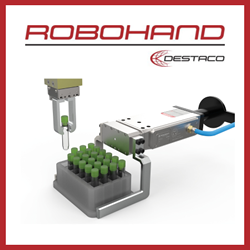Verizon, Skyward, Wing, and Others Demonstrate Network-Based Drone Remote Identification
Verizon and Skyward, A Verizon company, along with a working group of other drone companies, successfully demonstrate network-based remote identification of drones.
Verizon and Skyward, A Verizon company, along with a working group of other drone companies, successfully demonstrated network-based remote identification of drones with the InterUSS Platform. This demonstration included seven drone flying use cases including infrastructure inspection, delivery, and recreational flights. The drones flew in close proximity while safely following ASTM remote ID protocols, the leading industry standard.
In the demonstration, Skyward simulated a beyond visual line of sight (BVLOS) infrastructure inspection flight with the drone flown directly over Verizon 4G LTE for the duration of the flight. Connecting drones to the wireless network facilitates the sharing of information critical to the safe integration of drones into the National Airspace System, especially for the complex operations of the near future, which will demand safe, autonomous, BVLOS flights.
"Remote ID lets operators see other aircraft and allows authorities to understand where drones are flying and for what purpose," said Eric Ringer, Director of Aviation Network Technology at Skyward, A Verizon company. "Technologies like cellular connectivity and network-based remote ID are bringing us one step closer to making deploying drones as easy and trusted as picking up your phone and calling a friend."
About the demo
● The demonstration took place in controlled airspace near San Francisco International Airport, and featured participants from Verizon, Skyward, Wing, Uber, AirMap, AiRXOS, ANRA, CNN, Kittyhawk, UASidekick, and Flite Test. Permission to fly in controlled airspace was obtained via LAANC, the FAA's Low Altitude Authorization and Notification Capability.
● Network-based remote ID is designed to support transparency, while protecting the data of drone operators and customers.
● The ASTM remote ID standard enables reliable remote identification of a variety of drones. It represents the consensus of 35 regulatory and industry organizations and can be implemented today. It is designed to support the needs of regulators across the world and support different types of aircraft and operators.
Without a system for remote identification, drones cannot be safely integrated within the national airspace and enterprise adoption will be restricted, even if they are connected to 4G LTE or 5G Ultra Wideband.
"The InterUSS initiative is another important step toward the safe, efficient, scalable integration of drones into the national airspace," said Mariah Scott, President of Skyward. "Our goal is to manage all vehicles in the air safely and in a way that enables commerce, and we've shown that we have the technical ability to do that. We look forward to a requirement for remote identification, which will directly enhance safety and further spur innovation."
Featured Product

